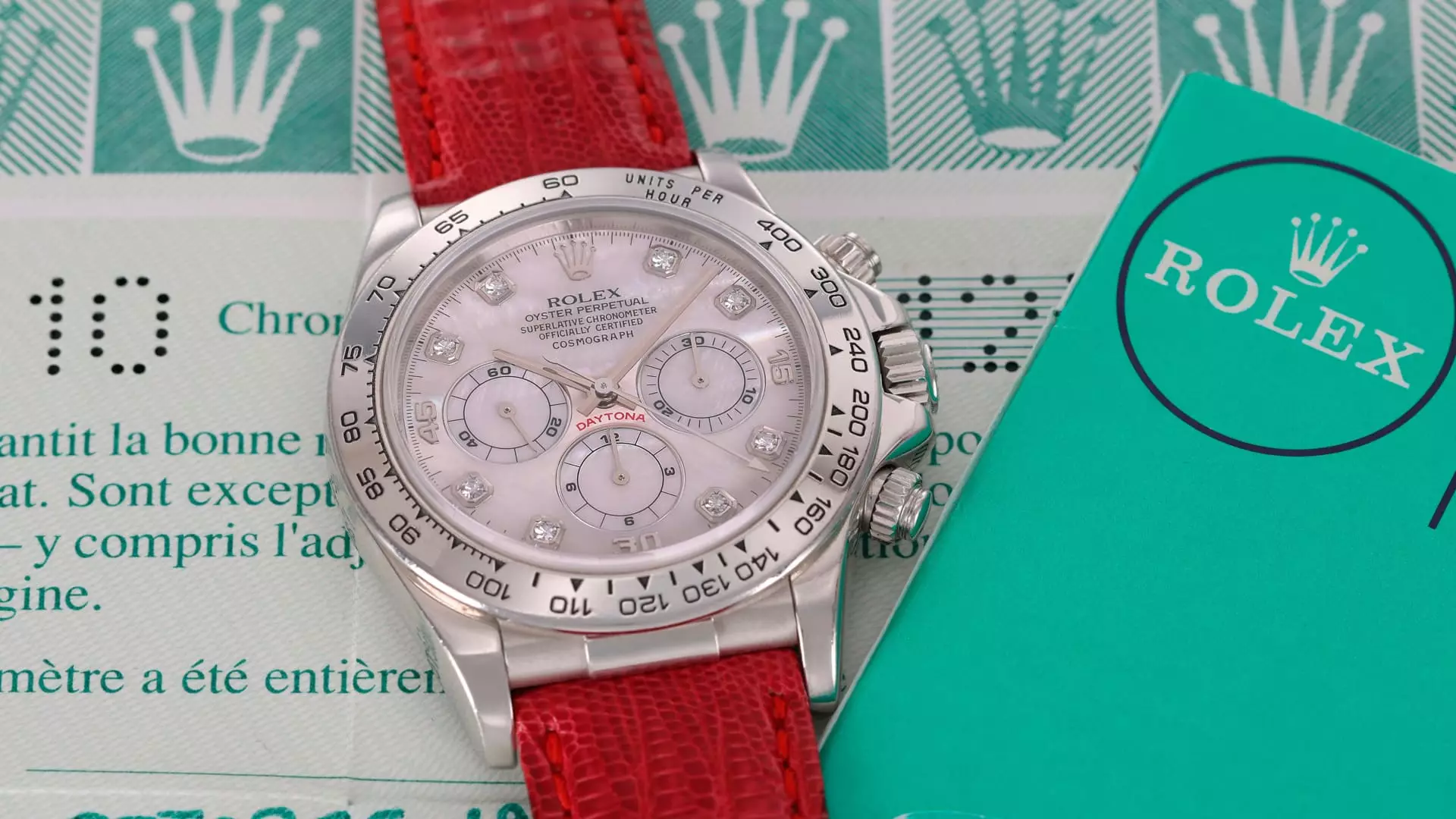On an unassuming Sunday, the world of haute horlogerie finds itself on the edge of excitement as a remarkable 1999 platinum Rolex Daytona takes center stage at Sotheby’s Geneva auction. This exquisite timepiece, with an anticipated selling price of up to $1.7 million, is about to redefine the parameters of luxury and exclusivity. But beyond its staggering potential price tag, this watch encapsulates an intriguing narrative about craftsmanship, prestige, and the perception of value in contemporary society.
What sets this particular Rolex Daytona apart is not merely the precious platinum craft or its diamond-studded mother-of-pearl face, but rather its elusive backstory. Unlike its counterparts typically mass-produced for the market, this watch was a custom creation—an almost alien concept for Rolex, known for its rigorous boundaries of brand standards and collections. “It’s a rarity in Rolex history,” notes Pedro Reiser, a senior watch expert at Sotheby’s. In a world where customization often leads to fascinating tales of personal connections and passions, Rolex has maintained a robust assembly line identity aimed at invulnerability against fads and frivolity.
How Many Legendary Timepieces Have You Encountered?
Just four of these custom pieces are known to exist, each bearing a distinct dial. Given that this specific model is the last remaining for sale, the rarity increases its allure exponentially—not only as a time-telling device but as an investment steeped in rich narrative. The other three iterations already fetched astronomical sums, topping $3 million each. Rarity does not merely enhance demand; it invokes a primal instinct in collectors to own a slice of history, blurred by the lines of craftsmanship and artistry.
This clock encapsulates much more than just physical beauty; it represents an era where the boundaries of luxury were evolving. Crafted under the stewardship of Patrick Heiniger, Rolex’s CEO from 1992 to 2008, this piece tells a story of innovation during a time marked by swift growth and greater secrecy within the watchmaking industry. Rumors surrounding Heiniger’s personal connection to the watch further complicate its already rich lore, even if they remain largely unsubstantiated—truth often mingles with myth in the pantheon of luxury.
Luxury in Transition: The $1.7 Million Watch Market
Despite the cloudy economic landscape, one thing is clear: affluent collectors have begun to view rare timepieces not just as accessories but as lucrative investments. A recent Knight Frank index reports that luxury watches have appreciated by an astounding 125% over the last decade—this Daytona is likely to play a key role in that phenomenon. As younger and wealthier buyers enter the scene, traditional hierarchies of investment are upended. The timepiece that was once merely a signifier of status now occupies a dual role as a form of asset management.
This growth trend may initially seem paradoxical in a world grappling with climate change and inequality. Yet, the watch community perseveres, demonstrating a compelling irony amidst serious social considerations: while many face financial instability, the luxury market thrives—an echo of our societal values, where the allure of status and value seems invulnerable to broader economic shifts.
As the clock ticks down to the auction, the anticipation builds—not just for the bidders but for the collectors who affectionately regard this platinum Daytona as a piece of timeless art. Each tick could signify the closure of a chapter, or it might mark the dawn of a new dialogue about luxury, scarcity, and the relentless pursuit of significance in material goods. Ultimately, this watch does more than keep time; it exists as a testament to the complex relationship we have developed with luxury in the modern era—a space where meaning, value, and myth intertwine in exquisite harmony.

